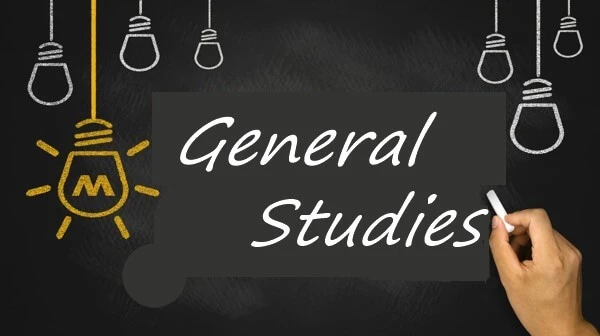Bond Books
Author: John Olusina Obimakinde, Samuel Oluwaseun Obimakinde
School: WAEC, JAMB & POST UTME
Department:
Course Code: CHEMISTRY
Topics: Chemistry Calculations, Masses and Formulae, Relative Atomic and Molecular Masses, Mass Percentage Composition, Valency, Chemical Formula, Empirical and Molecular Formulae, Reduced Mass, Chemical Reaction, Stoichiometry, Mole, Chemical Equations, Reaction Stoichiometry, Chemical Laws, Redox Reactions, IUPAC Nomenclature, Oxidation Number, Redox Equations, IUPAC Nomenclature of Inorganic Substances, Atomic Structure, Chemical Bonding, Dalton’s Atomic Theory, Wave-Particle Duality of Matter, Uncertainty Principle, Ionization Energy, Ionic Bond, Lattice Energy, Covalent Bond, Heat of Reaction, Dipole Moment, Formal Charge, The Gaseous State, Gas Pressure, Gas Laws, Critical Constants of Gases and Equations of State for Real Gases, Reduced State Properties, Gas Density, Gas Stoichiometry, Molar Volume of Gases, Relative Vapour Density, Gas diffusion, Mole Fraction, Kinetic Theory of Gases, The Solid and Liquid States, Vapour Pressure, Change of State, Density of Solids, X-Ray Crystallography, Determination of Viscosity of Liquids from Stokes’ Law, Surface Tension, Properties of Solutions, Concentration, Molality, Solubility, Solubility Product, Colligative Properties of Solutions, Conductance of Solutions, Quantitative Analysis, Volumetric Analysis, Gravimetric Analysis, Thermodynamics, Calorimetry, Heat (Enthalpy Change) of Physical Change, Heat (Enthalpy Change) of Reaction, Heat Capacities of Gases, Thermodynamics of Solutions, The First Law of Thermodynamics, The Second Law of Thermodynamics, Efficiency, Electrochemistry, Electrochemical Cells, Electrolysis, Chemical Equilibria, Le Chatelier’s Principle, Position of Equilibrium, Equilibrium Constant, Reaction Quotient, Acid-Base Equilibria, Acid Ionization Constants, Base Ionization Constants, Water Autoionization Constant, Hydrogen Ion Concentration, Buffer Solutions, Salts, Chemical Kinetics, Rates of Reactions, Rate Law, Nuclear Chemistry, Radioactivity, Nuclear Reactions
Reinforced Concrete Design To Eurocode 2
Author: Bill Mosley, John Bungey, Ray Hulse
School: Bayero University, Kano
Department: Engineering
Course Code: CIV3307
Topics: Reinforced Concrete Design, Design processes, composite action, stress-strain relations, shrinkage, thermal movement, creep, materials specification, Limit state design, Characteristics material strengths, Combination of actions, Load combinations, Beams analysis, Frames Analysis, Shear wall structures resisting horizontal loads, Moments redistribution, Rectangular-parabolic stress block, Triangular stress block, Shear, bond, Torsion, Anchorage bond, span-effective depth ratio, deflection calculation, flexural cracking, Thermal cracking, Shrinkage cracking, Reinforced concrete beams design, Reinforced concrete slabs design, Column design, column classification, slender column design, Foundations design, Retaining walls design, Prestressed concrete, Water-retaining structures, composite construction, Footings, Reinforcement details, Shear connector design
Chemistry For Dummies ,2nd edition
Author: John Moore
School: Covenant University
Department: Science and Technology
Course Code: CHM221
Topics: Chemistry, Scientific Method, SI Measurement System, chemical calculations, matter, energy, atom, atomic structure, periodic table, chemical reactions, mole concept, solutions, thermochemistry, Enthalpy, heat of reaction, acid, base, quantum theory, ionic bonding, Covalent Bonding, Intermolecular Forces, Condensed States, environmental chemistry, air pollution, water pollution, nuclear chemistry
Organic Chemistry, 11th Edition
Author: Francis Carey, Robert Giuliano, Neil Allison, Susan Bane
School: Edo University
Department: Science and Technology
Course Code: CHM123
Topics: Organic Chemistry, alkanes, cycloalkanes, chirality, alcohols, alkyl halides, Nucleophilic Substitution, alkenes, elimination reactions, alkynes, free radicals, arenes, aromaticity, Nucleophilic Substitution. electrophilic Substitution, Spectroscopy, Organometallic Compounds, alcohols, diols, thiols, Ethers, Epoxides, Sulfides, Aldehydes, Ketones, Carboxylic Acids, Nucleophilic Acyl Substitution, enols, enotates, Amines, Carbohydrates, lipid amino acids, peptides, proteins, Nucleosides, Nucleotides, Nucleic Acids, Synthetic Polymers, ionic bonds, covalet bonds, Lewis formula, octet rules
Author: Kelani Tawakalit
School: Edo University
Department: Science and Technology
Course Code: CHM212
Topics: Molecular orbital theory, bond order, bond strength, Photoelectron spectroscopy, Ionization energy, Hard-Soft Acid-Base model
Author: Theodore Brown, Eugene LeMay, Bruce Bursten, Catherine Murphy, Patrick Woodward, Matthew Stoltzfus
School: Federal University of Agriculture, Abeokuta
Department: Science and Technology
Course Code: CHM101
Topics: matter, energy, atom, molecule, ion, chemical reaction, Reaction Stoichiometry, thermochemistry, electronic structure, chemical bonding, molecular geometry, bonding theorues, gases, liquid intermolecular forces, solids, solutions, chemical kinetics, Chemical Equilibrium, Acid–Base Equilibria, Aqueous Equilibria, chemical thermodynamics, electrochemistry, nuclea chemistry, transition metals, coordination chemistry, organic chemistry, biological chemistry, chemistry of life
Solution to Exercise Chemistry the central science ,12th edition
Author: Roxy Wilson
School: Federal University of Agriculture, Abeokuta
Department: Science and Technology
Course Code: CHM101
Topics: matter, energy, atom, molecule, ion, chemical reaction, Reaction Stoichiometry, thermochemistry, electronic structure, chemical bonding, molecular geometry, bonding theories, gases, liquid intermolecular forces, solids, solutions, chemical kinetics, Chemical Equilibrium, Acid–Base Equilibria, Aqueous Equilibria, chemical thermodynamics, electrochemistry, nuclea chemistry, transition metals, coordination chemistry, organic chemistry, biological chemistry, chemistry of life
Materials Science and Engineering An Introduction,10th edition
Author: William Callister, David Rethwish
School: Federal University of Technology, Owerri
Department: Engineering
Course Code: ENG207, ENG208
Topics: atomic structure, interatomic bonding, crystalline solids, crystals, atomic bonding, diffusion, dislocation, strengthening mechanisms, failure, mechanical properties, phase diagrams, phase transformations, alloy, ceramic, polymer, corrosion, degradation, composites, polymer synthesis, polymer processing, oxidation, electrical properties, magnetic properties, optical properties, thermal properties, unit cell, density computation, Polymorphism, Allotropy, Crystallographic points, Crystallographic directions, polycrystalline materials, anisotropy, X-ray diffraction, plastic deformation, point defects, atomic vibration, fick's law, Stress–Strain Behavior, Anelasticity, fatigue, creep, solubility limit, phase equilibria
Materials Science and Engineering, An Introduction ,8th Edition Solution Manual
Author: William Callister
School: Federal University of Technology, Owerri
Department: Engineering
Course Code: ENG207, ENG208
Topics: atomic structure, interatomic bonding, crystalline solids, crystals, atomic bonding, diffusion, dislocation, strengthening mechanisms, failure, mechanical properties, phase diagrams, phase transformations, alloy, ceramic, polymer, corrosion, degradation, composites, polymer synthesis, polymer processing, oxidation, electrical properties, magnetic properties, optical properties, thermal properties, unit cell, density computation, Polymorphism, Allotropy, Crystallographic points, Crystallographic directions, polycrystalline materials, anisotropy, X-ray diffraction, plastic deformation, point defects, atomic vibration, fick's law, Stress–Strain Behavior, Anelasticity, fatigue, creep, solubility limit, phase equilibria
Author: Edudigm
School: University of Ilorin
Department: Science and Technology
Course Code: CHM112
Topics: Organic Chemistry, bond breaking, bond formation, electrophile, nucleophile, Aromaticity, Resonance effect
Departments

Administration, Social and Management science

Agriculture and Veterinary Medicine

Arts and Humanities

Education

Engineering

General studies

Law

Medical, Pharmaceutical and Health science

Science and Technology